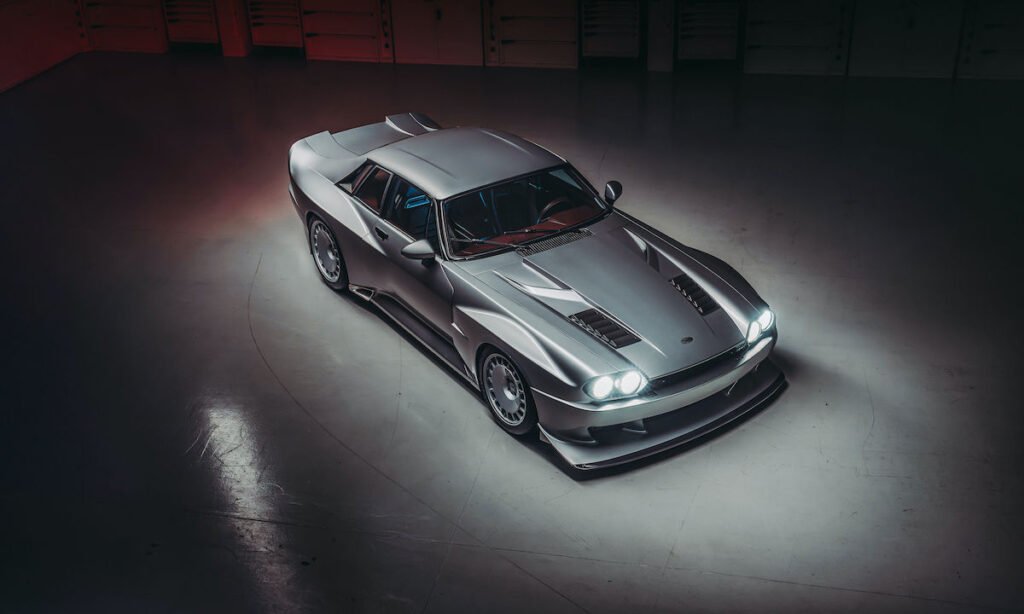Nearly 40 years after Tom Walkinshaw Racing (TWR) made waves on the motorsport stage, the name returns with a powerful statement in the form of the TWR V12 Super-GT Supercat.


Jaguar recently unveiled its new corporate design direction, which focuses on an all-electric future. For those who reject modernity, this TWR V12 is the answer! At its core is a modern reinterpretation of the Jaguar XJS. Limited to just 88 custom-built examples, the Supercat offers enthusiasts a rare opportunity to own a piece of motorsport heritage reimagined for road and track amid the new energy revolution.
No EV here, but instead a heavily reworked 5.6-litre supercharged V12, delivering 492kW of power and 730Nm of torque. This marks a significant jump over the original naturally aspirated 5.3-litre V12, which produced 212kW and 431Nm. The upgraded powertrain is mated to a six-speed manual gearbox and plated limited-slip differential, delivering a pure, engaging driving experience.
Related: Two new E-Type Jaguars have left the production line
To handle the enormous power, TWR has reinforced the chassis with an integrated steel tube structure. The Supercat’s body panels, made from carbon fibre, reduce the car’s weight to 1,605 kg – a reduction of 9.3% compared to the original XJS. This focus on weight savings improves both performance and agility, crucial for a car designed to excel in dynamic environments. The suspension features double wishbones and an active dynamic damping system, providing a mix of comfort and responsiveness. Additional performance aids include optional carbon ceramic brakes, fully programmable traction control, launch control and five different driving modes, giving the driver precise control in any environment.


Overseen by acclaimed digital car stylist Khyzyl Saleem, the Supercat’s design respects the heritage of the XJS and introduces bold, contemporary elements. Key aerodynamic features include reshaped flying buttresses that improve airflow to the rear hips, a flat underbody and a custom rear splitter for increased downforce. The relocated exhausts, which now emerge from the side of the car, complement the aggressive appearance. In terms of dimensions, the Supercat has evolved considerably compared to its predecessor. The car is now 1,975mm wide, compared to the XJS’s 1,793mm, with its wider track emphasizing stability and road presence. The upgraded chassis is paired with TWR Forged Monoblock wheels, which measure 18 inches at the front and 19 inches at the rear, a stark departure from the XJS’s 15-inch alloy wheels.


Inside, the Supercat combines luxury with performance-oriented amenities. Fully electric seats and advanced driving aids such as Launch Control and programmable driving modes provide both comfort and control. Despite its modern touches, the Supercat retains a raw, analog character that is aimed squarely at dedicated car enthusiasts. In tribute to Tom Walkinshaw’s 1988 Le Mans victory with the XJR-9, TWR will produce just 88 examples of the Supercat. Each car is commissioned individually, allowing owners to create a uniquely personal vehicle. Production will begin soon and first deliveries are expected in mid-2025.


Click here and browse thousands of new and used vehicles here with CARmag!

